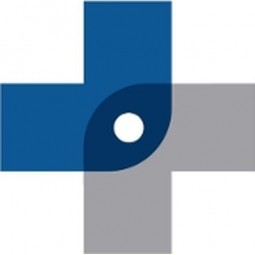Download PDF
Transforming Healthcare Documentation: A Case Study of Kittitas Valley Healthcare

Technology Category
- Infrastructure as a Service (IaaS) - Virtual Private Cloud
- Wearables - Virtual Reality Glasses, Headsets & Controllers
Applicable Industries
- Education
- Healthcare & Hospitals
Applicable Functions
- Quality Assurance
Use Cases
- Time Sensitive Networking
- Virtual Training
Services
- Testing & Certification
- Training
The Challenge
Kittitas Valley Healthcare (KVH), a small regional rural health system in Washington State, was grappling with the challenge of excessive administrative burdens on its clinicians. Studies have shown that clinicians in medium-sized hospitals spend about 44% of their time on documentation and only 24% on direct patient contact. This was largely due to the Medicare Physician Fee Schedule (MPFS), which required clinicians to document a wide range of data for billing verification. This system turned clinicians into data-entry clerks, documenting not only diagnoses, clinician orders, and patient visit notes, but also an increasing amount of low-value administrative data. KVH was using scribes to assist providers with documentation and data entry into the Electronic Medical Records (EMR). However, due to its rural location, KVH was struggling to recruit and retain high-performing scribes. The training for these scribes could take six to eight months and was not very effective in reducing high scribe turnover rates.
The Customer
Kittitas Valley Healthcare
About The Customer
Kittitas Valley Healthcare (KVH) is a small regional rural health system situated in the heart of Washington State. It provides patient-centered care through its hospital, clinics, and specialty services. KVH Hospital provides 24-hour emergency care and offers inpatient and outpatient hospital services. KVH also provides care through clinics and specialty services in both Upper and Lower Kittitas County. KVH sees 400 patients per day in its clinics. As a rural health system, KVH understands the importance of providing its clinicians with the support they need to maintain quality outcomes, reduce costs, and improve the patient experience—the Triple Aim of health care.
The Solution
To address this challenge, KVH decided to use virtual scribes from Augmedix. These virtual scribes are specially trained to work in both acute and non-acute environments, acting as an always-present assistant to the clinician, converting real-time clinician-patient conversations into precise medical documentation. They are experienced in most EMRs, which improves accuracy, increases the quality of documentation, and ensures timely charge capture for faster reimbursement. Virtual scribes can also place orders for testing, medications, and labs to keep patients moving along the care continuum. KVH created a unique model to begin the roll-out of virtual scribes through a “memorandum of understanding” with its clinicians. In order to qualify for a scribe, clinicians must become productive enough to cover the cost of the service creating a dual incentive. The system also created a work group to present the clinicians the financial case around the business of healthcare to clinicians.
Operational Impact
Quantitative Benefit
Related Case Studies.

Case Study
Hospital Inventory Management
The hospital supply chain team is responsible for ensuring that the right medical supplies are readily available to clinicians when and where needed, and to do so in the most efficient manner possible. However, many of the systems and processes in use at the cancer center for supply chain management were not best suited to support these goals. Barcoding technology, a commonly used method for inventory management of medical supplies, is labor intensive, time consuming, does not provide real-time visibility into inventory levels and can be prone to error. Consequently, the lack of accurate and real-time visibility into inventory levels across multiple supply rooms in multiple hospital facilities creates additional inefficiency in the system causing over-ordering, hoarding, and wasted supplies. Other sources of waste and cost were also identified as candidates for improvement. Existing systems and processes did not provide adequate security for high-cost inventory within the hospital, which was another driver of cost. A lack of visibility into expiration dates for supplies resulted in supplies being wasted due to past expiry dates. Storage of supplies was also a key consideration given the location of the cancer center’s facilities in a dense urban setting, where space is always at a premium. In order to address the challenges outlined above, the hospital sought a solution that would provide real-time inventory information with high levels of accuracy, reduce the level of manual effort required and enable data driven decision making to ensure that the right supplies were readily available to clinicians in the right location at the right time.

Case Study
Gas Pipeline Monitoring System for Hospitals
This system integrator focuses on providing centralized gas pipeline monitoring systems for hospitals. The service they provide makes it possible for hospitals to reduce both maintenance and labor costs. Since hospitals may not have an existing network suitable for this type of system, GPRS communication provides an easy and ready-to-use solution for remote, distributed monitoring systems System Requirements - GPRS communication - Seamless connection with SCADA software - Simple, front-end control capability - Expandable I/O channels - Combine AI, DI, and DO channels

Case Study
Driving Digital Transformations for Vitro Diagnostic Medical Devices
Diagnostic devices play a vital role in helping to improve healthcare delivery. In fact, an estimated 60 percent of the world’s medical decisions are made with support from in vitrodiagnostics (IVD) solutions, such as those provided by Roche Diagnostics, an industry leader. As the demand for medical diagnostic services grows rapidly in hospitals and clinics across China, so does the market for IVD solutions. In addition, the typically high cost of these diagnostic devices means that comprehensive post-sales services are needed. Wanteed to improve three portions of thr IVD:1. Remotely monitor and manage IVD devices as fixed assets.2. Optimizing device availability with predictive maintenance.3. Recommending the best IVD solution for a customer’s needs.

Case Study
HaemoCloud Global Blood Management System
1) Deliver a connected digital product system to protect and increase the differentiated value of Haemonetics blood and plasma solutions. 2) Improve patient outcomes by increasing the efficiency of blood supply flows. 3) Navigate and satisfy a complex web of global regulatory compliance requirements. 4) Reduce costly and labor-intensive maintenance procedures.

Case Study
Harnessing real-time data to give a holistic picture of patient health
Every day, vast quantities of data are collected about patients as they pass through health service organizations—from operational data such as treatment history and medications to physiological data captured by medical devices. The insights hidden within this treasure trove of data can be used to support more personalized treatments, more accurate diagnosis and more advanced preparative care. But since the information is generated faster than most organizations can consume it, unlocking the power of this big data can be a struggle. This type of predictive approach not only improves patient care—it also helps to reduce costs, because in the healthcare industry, prevention is almost always more cost-effective than treatment. However, collecting, analyzing and presenting these data-streams in a way that clinicians can easily understand can pose a significant technical challenge.






